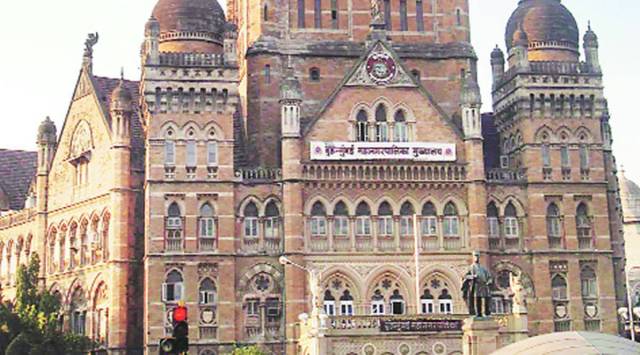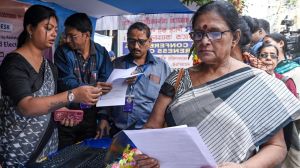Stay updated with the latest - Click here to follow us on Instagram
BMC tests 4 alternate methods to fill road potholes
Four pothole filling solutions were tried out at three sites on a road under the Eastern Freeway on Friday.
 Every year, the civic body uses 11,000 metric tonnes of pothole mix on average during monsoon. (File Photo)
Every year, the civic body uses 11,000 metric tonnes of pothole mix on average during monsoon. (File Photo)After facing flak over the years for using cold mix technology to fill potholes on asphalt roads in the city, the Brihanmumbai Municipal Corporation (BMC) tested several alternative methods to fill potholes on Friday — rapid hardening cement, paver blocks, geo-polymer mix and pre-cast concrete and steel plates.
Four pothole filling solutions were tried out at three sites on a road under the Eastern Freeway on Friday.
On the road below the eastern freeway between Daya Shankar Chowk to MBPT toll, the civic body tried rapid hardening concrete to fill in the pothole. At this site, the patch needed to be barricaded for six hours afterwards before it was reopened to the public.
For the next pothole on the same road, the BMC used M-60 concrete. But a steel plate was placed after filling the potholes and it was opened for traffic. A road has to be kept shut for six days after using M-60 concrete, so a steel plate was used to cover the area since this road could not be kept shut for so long, officials said.
The third technique was geo-polymer mix. This is a combination of sand, stone and polymer. After using this, a road can be opened to traffic within two hours.
At the fourth location, paver blocks were used to fill in the pothole. But it is a temporary arrangement and the BMC uses paver blocks to fill potholes during heavy rainfall.
BMC has been using cold-mix material to fill potholes since 2018-19 but the success of this method has been questioned. Officials from the roads and traffic department said after potholes are repaired using cold mix, it requires at least 12 hours to stabilise (in a dry spell) and traffic should be stopped.
Last week, additional municipal commissioner P Velrasu, in charge of the civic roads department, inspected various roads in the western suburbs — in Andheri, Juhu, Malad, Kandivali and Borivali — along with a team of civic officers to inspect the pothole filling work. Velrasu had directed officials to check alternate mechanisms to fill potholes during monsoon as the cold mix technology cannot be used during heavy rainfall.
Every year, the civic body uses 11,000 metric tonnes of pothole mix on average during monsoon. Data shows that this year, the BMC has filled more than 12,200 potholes making use of 1,258 metric tonne of cold mix, which is produced at the civic body’s asphalt plant in Worli.







